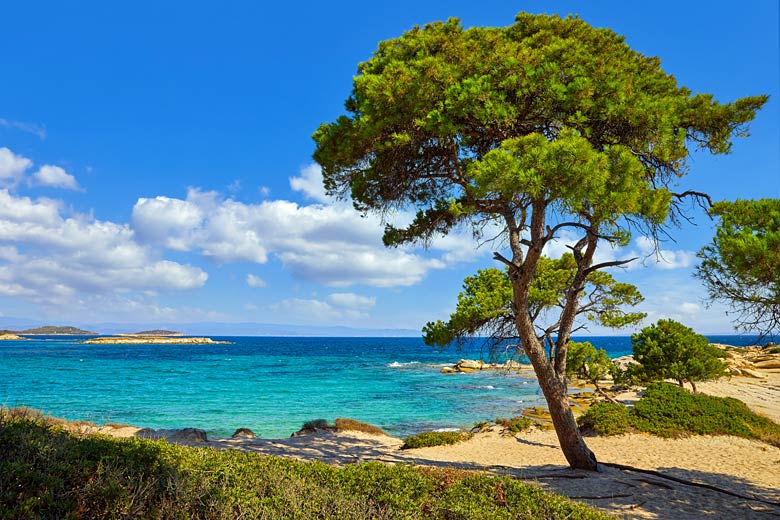7 fantastic places for your all inclusive summer escape
An all inclusive holiday is hard to beat: paid for upfront, you can get away worry-free, safe in the knowledge that your holiday plus many of its extras - from drinks to activities - have been taken care of in advance.
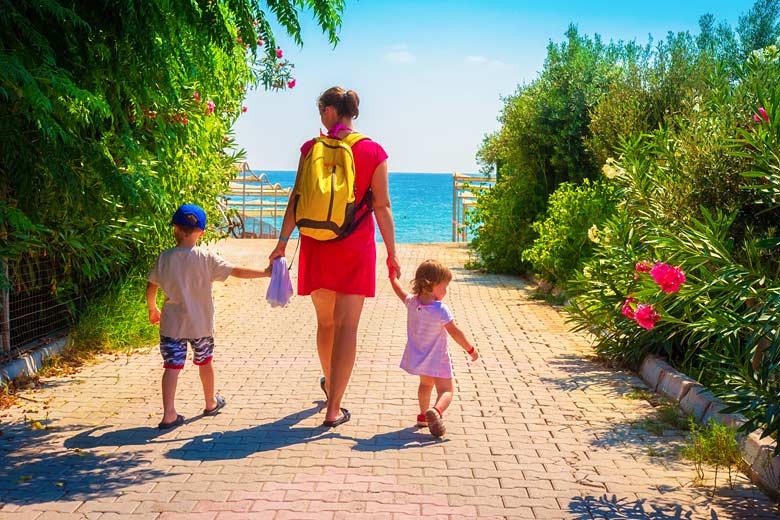
To help you decide just where to go on your next all inclusive summer escape, we've not only picked our favourite destinations from May to October for your to consider but also built an all-singing-all-dancing tool to help you choose a resort based on your preferred weather.
- Menorca, Balearic Islands
- Istrian Riviera, Croatia
- Aruba
- Cyprus
- Fuerteventura, Canary Islands
- Costa Brava, Spain
- Bourgas, Bulgaria
 Destination finder
Destination finder
Do you love nothing more than an all inclusive escape? If you're planning your indulgent summer holiday, don't miss the latest deals from First Choice*, the experts in all inclusive.
1. Menorca, Balearic Islands
- Flight time: 2 hours 15 mins
- Time difference: UK time +1
- The very best time to go: June, July & August
The Spanish archipelago of the Balearic Islands needs no introduction. These lively dots in the Med have been attracting everyone from the rich and famous to the hippy crowd for decades, and four of this cluster (Majorca, Menorca, Ibiza, and Formentera) remain major holiday hotspots today.
While the facilities found in Majorca* and Ibiza* are unrivalled and Formentera* is loved for its less developed vibe, Menorca* sits somewhere in the middle. You'll find everything you could possibly need to call it home with plenty of bars, restaurants, shops, and activities for all budgets. However, there's also a more laidback side that enchants anyone looking for something a little different from these islands.
In particular, Menorca is renowned for its walking trails at the likes of the S'Albufera National Park, which zigzag the island taking in warm-scented pine forests, traditional villages and hilltop vantage points.
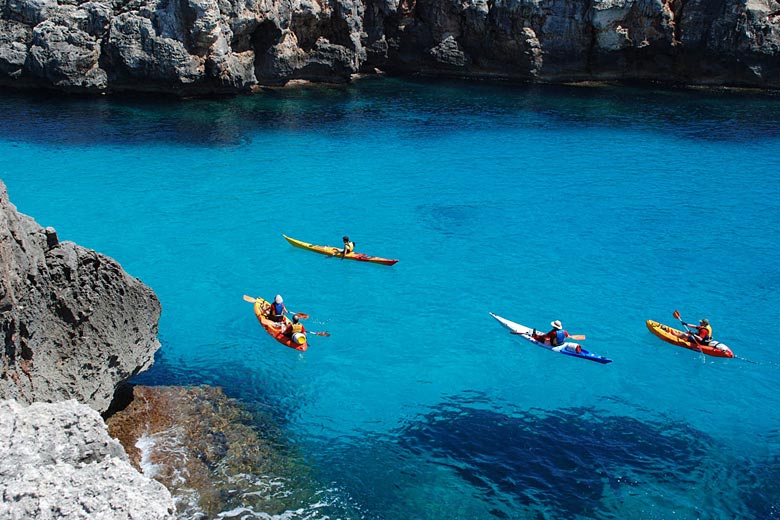
Add to this the beautiful selection of bays, coves and beaches, some well stocked with loungers and amenities, others harder to get to and completely secluded, and it's easy to see why it's loved by those who want to delve a little deeper.
Weatherwise, Menorca enjoys much the same conditions as its siblings. Summers are delightfully hot and sunny, and that turquoise water you'll be itching to dive into is nice and warm, especially by August. Forget worrying about rainfall; it's likely you won't encounter any during your visit but if you do, it's even more likely to move on quickly.
The other great thing about the weather in Menorca is that the pleasant conditions can be relied upon from May all the way until October. While the core summer months will be the hottest and sunniest, there's no reason to rule out a visit in late spring or early autumn, as these times, too, see plenty of sunshine, invitingly warm days, and potentially fewer crowds.
Menorca weather
| Jan | Feb | Mar | Apr | May | Jun | Jul | Aug | Sep | Oct | Nov | Dec | |
|---|---|---|---|---|---|---|---|---|---|---|---|---|
| Maximum daytime temperature °C |  14 14 |
 14 14 |
 15 15 |
 17 17 |
 21 21 |
 25 25 |
 28 28 |
 28 28 |
 26 26 |
 22 22 |
 18 18 |
 15 15 |
| Hours of sunshine (daily) | ||||||||||||
| Days with some rainfall |  15 15 |
 13 13 |
 14 14 |
 12 12 |
 9 9 |
 5 5 |
 3 3 |
 5 5 |
 8 8 |
 13 13 |
 13 13 |
 16 16 |
| Sea temperature °C |  14 14 |
 14 14 |
 14 14 |
 15 15 |
 18 18 |
 21 21 |
 24 24 |
 26 26 |
 25 25 |
 22 22 |
 19 19 |
 16 16 |
2. Istrian Riviera, Croatia
- Flight time: 2 hours
- Time difference: UK time +1
- The very best time to go: July
Croatia* is a firm favourite with holidaymakers these days what with its wonderful summer weather, variety of resorts, countless islands, and swimming spots. Along with Dubrovnik* and the Dalmatian Coast*, the Istrian Riviera* is one of the country's most beloved regions. Sitting on a peninsula in the northwest of Croatia, it blends history, scenery, beaches, and fabulous food to create one truly sumptuous destination.
Given that it's a mere stone's throw from Italy, it's perhaps not surprising that there's a strong Italian flavour to this part of Croatia. You'll find this reflected in everything from Roman ruins and Venetian architecture to the array of Italian-influenced dishes on offer.
More than this, the heritage on display in this region is what really sets it apart. We're talking impressive ruins, such as the Roman amphitheatre and Temple of Augustus found in Pula* and the 6th-century Euphrasian Basilica (a UNESCO site, no less) in Porec*. It's terracotta-top central in the port city of Rovinj meanwhile, which is rightly lauded for its oh-so-quaint old town.
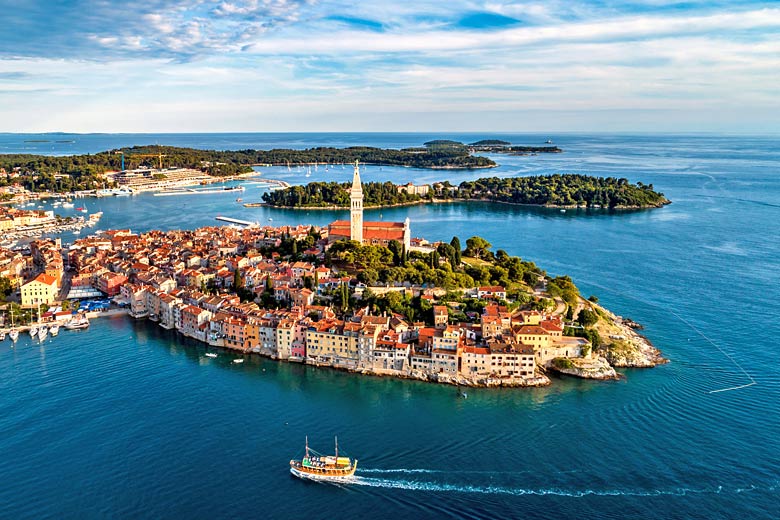
If you're hoping to feel the sand between your toes, you might be a touch disappointed as the majority of beaches and bays are all about pebbles (much like most of the Croatian coast). For a bit of everything (that is, pebbles, some sand, and rock formations), Umag's Blue Flag-winning Sol Polynesia Beach is a hit. Waters are clear and calm, ensuring it's fun and safe for all.
The Istrian Riviera is bathed in some quintessentially Mediterranean weather throughout summer. Things are starting to warm up by May, with lots of sunshine and warm days, although evenings remain cool.
June to September sees all the sunshine you could wish for with little chance of rainfall, deliciously hot daily highs and warm water for swimming, especially by August. Things start to cool by October but it's still perfectly suitable for a late summer getaway before the winter chill.
Istrian Riviera weather
| Jan | Feb | Mar | Apr | May | Jun | Jul | Aug | Sep | Oct | Nov | Dec | |
|---|---|---|---|---|---|---|---|---|---|---|---|---|
| Maximum daytime temperature °C |  8 8 |
 10 10 |
 13 13 |
 17 17 |
 21 21 |
 25 25 |
 28 28 |
 28 28 |
 24 24 |
 19 19 |
 13 13 |
 10 10 |
| Hours of sunshine (daily) | ||||||||||||
| Days with some rainfall |  12 12 |
 11 11 |
 12 12 |
 13 13 |
 14 14 |
 14 14 |
 10 10 |
 11 11 |
 11 11 |
 12 12 |
 13 13 |
 12 12 |
| Sea temperature °C |  11 11 |
 10 10 |
 10 10 |
 12 12 |
 18 18 |
 22 22 |
 25 25 |
 25 25 |
 23 23 |
 19 19 |
 16 16 |
 13 13 |
3. Aruba
- Flight time: 9 hours 30 minutes
- Time difference: GMT -4
- The very best time to go: July
Sugar-white sands, crystal clear water, and frolicking flamingos - what more could you wish for on a Caribbean* getaway? All this and more can be found on the Dutch island of Aruba* in the Lesser Antilles, a mere 18 miles off the north coast of Venezuela.
Although by no means a secret, Aruba isn't a mainstream destination for UK holidaymakers. Other Caribbean islands, such as Antigua*, Barbados* and the Dominican Republic*, bustle with Brits, yet this southerly nugget remains relatively unknown to us, due in part to its inaccessibility from the UK - something thankfully remedied by First Choice for curious summer sun-seekers.
Don't be mistaken, however; this is no untamed rock in the wilderness. Aruba is a well-established resort island with all the amenities you could wish for - sugar-sand beaches and crystal clear water at the likes of Palm Beach* and Druif Beach* included .
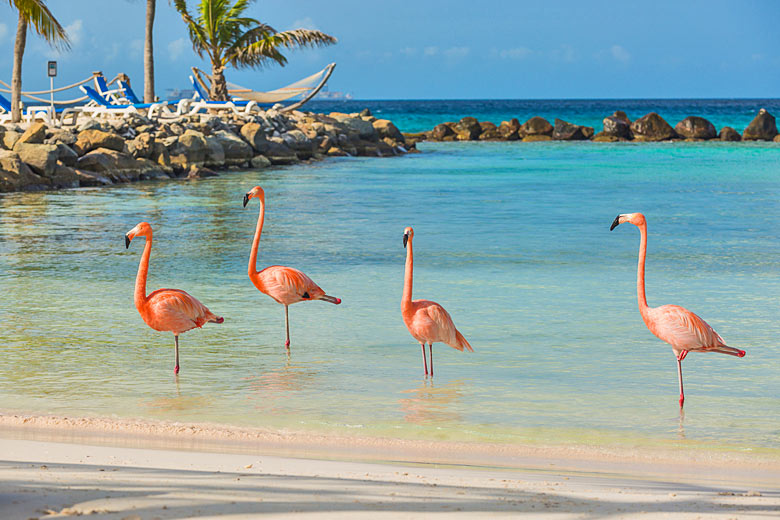
The rocky, cactus-marked paths of the Arikok National Park are wonderful for hiking and biking, while the island's capital, Oranjestad, is a colourful ode to its colonial past with Dutch influences at every turn.
Unsurprising, given that the Dutch have long basked in the glorious sunshine that coats this southerly island. Thanks to its position, Aruba sits to the south of the main hurricane zone and has a far drier climate than many of its Caribbean peers.
Although it does rain here, the landscape is arid, almost desert-like in parts. Days are pretty consistently hot from May to October, not to mention the sea, which is bath-like, most notably from August onwards. Wind is a feature here with, albeit welcome, sea breezes blowing in from the easterly trade winds, which sweep in from the Atlantic side - this helps to make it a hit with all sorts of surfers.
Aruba weather
| Jan | Feb | Mar | Apr | May | Jun | Jul | Aug | Sep | Oct | Nov | Dec | |
|---|---|---|---|---|---|---|---|---|---|---|---|---|
| Maximum daytime temperature °C |  31 31 |
 32 32 |
 32 32 |
 32 32 |
 32 32 |
 33 33 |
 33 33 |
 33 33 |
 33 33 |
 33 33 |
 32 32 |
 32 32 |
| Hours of sunshine (daily) | ||||||||||||
| Days with some rainfall |  8 8 |
 5 5 |
 4 4 |
 3 3 |
 4 4 |
 5 5 |
 7 7 |
 6 6 |
 6 6 |
 9 9 |
 10 10 |
 10 10 |
| Sea temperature °C |  26 26 |
 26 26 |
 26 26 |
 26 26 |
 27 27 |
 27 27 |
 27 27 |
 28 28 |
 28 28 |
 28 28 |
 28 28 |
 27 27 |
4. Paphos, Cyprus
- Flight time: 4 hours 30 minutes
- Time difference: UK time +2
- The very best time to go: May, June & September
Cyprus* is loved for all the right reasons: weather, beaches, attractions, facilities and fabulous food among them. Typically, holidaymakers head for either the Paphos* or Larnaca* regions. While the latter is renowned for its party resorts like Ayia Napa* and Nissi Beach*, the former is a touch more subdued with museums, ruins, and restful resorts to choose from.
In particular, the city of Paphos* has a lively seafront promenade and leaves you perfectly positioned to explore surrounding sites, such as the Paphos Archaeological Park and the UNESCO-awarded Tomb of the Kings necropolis. More water-based pursuits can be found at Coral Bay, with its soft beach and ample supply of things to do, while the pebbly Pissouri Beach is another crowd pleaser.
Wildlife aficionados should seek out Limassol*'s Salt Lake, the largest inland body of water in Cyprus, which is home to migratory birds all year round. If it's hiking and dramatic hillscapes you fancy, make for the Troodos Mountains, woven with paths and trails to take you deep into the heart of the island's pine-clad interior.
One of the most inviting things about Cyprus is that - in true eastern Med form - it retains its heat and sunshine for longer than most places further west. This is what makes it that bit hotter for longer than the likes of the Costa Brava or the Balearics, say.
In fact, Cyprus is the sunniest of our selection boasting around 12 hours per day at its peak in July and August. The water benefits from these rays as well, warming nicely, even retaining some of this heat into September and October. In short, Cyprus is one of the hottest, driest and sunniest summer destinations you could hope to find in the Mediterranean.
Paphos weather
| Jan | Feb | Mar | Apr | May | Jun | Jul | Aug | Sep | Oct | Nov | Dec | |
|---|---|---|---|---|---|---|---|---|---|---|---|---|
| Maximum daytime temperature °C |  16 16 |
 16 16 |
 17 17 |
 21 21 |
 24 24 |
 28 28 |
 30 30 |
 30 30 |
 29 29 |
 25 25 |
 21 21 |
 17 17 |
| Hours of sunshine (daily) | ||||||||||||
| Days with some rainfall |  14 14 |
 12 12 |
 9 9 |
 5 5 |
 3 3 |
 1 1 |
 1 1 |
 1 1 |
 1 1 |
 4 4 |
 6 6 |
 13 13 |
| Sea temperature °C |  17 17 |
 16 16 |
 16 16 |
 17 17 |
 20 20 |
 24 24 |
 27 27 |
 28 28 |
 26 26 |
 24 24 |
 21 21 |
 19 19 |
5. Fuerteventura, Canary Islands
- Flight time: 4 hours 30 minutes
- Time difference: UK time +/-0
- The very best time to go: May, June, July & August
The sand-swept island of Fuerteventura* is the second largest in the Canaries* after Tenerife. It's much loved as a reliable destination for some serious sunshine all year round, and the summer months are, without doubt, the sunniest and hottest time to go.
You'll find all activities, restaurants and shops in the main resort towns of Corralejo and Jandia, among others, and there's a wealth of things to do if you're keen to try more than simply lying by the pool or bobbing about in the sea - not that there's anything wrong with doing just that on your all inclusive holiday!
Fuerteventura, a UNESCO Biosphere Reserve, really does boast some remarkable scenery, ripe for exploring on foot, two wheels or by brute strength from a kayak. Scale the relatively high point of Pico de la Zarza for expansive views across the island, traverse dunes in the Corralejo Natural Park, or head to the island of Los Lobos for an altogether different perspective. Throw in the attractions, museums, and theme parks, and you'll soon find there simply aren't enough hours in the day.
Fuerteventura (and nearby Lanzarote*, for that matter) has a distinctly different climate to its Canarian neighbours to the west. Lacking any mega mountain mass (Pico de la Zarza peaks at around 2,647 ft), such as Mount Teide in Tenerife* (12,198 ft as a comparison), Morro de la Agujereada in Gran Canaria* and Roque de los Muchachos in La Palma*, the island is much flatter, and therefore drier and windier.
The dunes of the interior bleed into wide, open beaches; the trick, however, is finding sheltered spots for sunbathing (for this, seek out smaller beaches) while anyone planning to tackle wind-dependent watersports is in for a blast - surfing rules the waves here.
Fuerteventura weather
| Jan | Feb | Mar | Apr | May | Jun | Jul | Aug | Sep | Oct | Nov | Dec | |
|---|---|---|---|---|---|---|---|---|---|---|---|---|
| Maximum daytime temperature °C |  19 19 |
 20 20 |
 21 21 |
 22 22 |
 23 23 |
 24 24 |
 27 27 |
 27 27 |
 27 27 |
 25 25 |
 23 23 |
 20 20 |
| Hours of sunshine (daily) | ||||||||||||
| Days with some rainfall |  3 3 |
 3 3 |
 3 3 |
 2 2 |
 1 1 |
 0 0 |
 0 0 |
 0 0 |
 1 1 |
 2 2 |
 3 3 |
 3 3 |
| Sea temperature °C |  19 19 |
 18 18 |
 18 18 |
 18 18 |
 19 19 |
 20 20 |
 21 21 |
 22 22 |
 23 23 |
 22 22 |
 21 21 |
 20 20 |
6. Costa Brava, Spain
- Flight time: 2 hours
- Time difference: UK time +1
- The very best time to go: July
The clue is in the name with the Costa Brava*, which translates to Rugged Coast. This lesser-visited stretch of Catalonia* in northeast Spain runs up to the border with France, and consists of pretty bays lapped with turquoise water, mountainous landscapes and beguiling historic towns.
If you're considering a break here, don't forget your beach bag: the Costa Brava has line after line of gorgeous sandy bays like S'Abanell Beach (the area's longest at 2 km) and Lloret de Mar (not far behind at 1.5 km) plus other, much smaller covert coves.
Away from the beach, you can look forward to exploring urban centres such as medieval Pals and the yellow-hued river houses of Girona, not to mention the endless attractions in Barcelona, which makes for an easy day trip. Seafood is another reason to head to these sunny shores, with fresh local produce the order of the day.
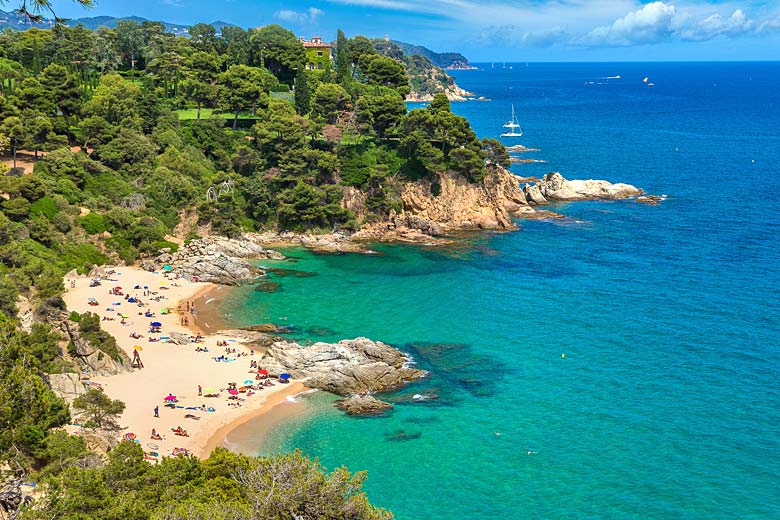
Outdoor lovers will want to visit some of the region's natural parks and protected areas, which are ideal for adventuring. The Cap de Creus National Park, for example, is pockmarked with cliffs and caves, while the Cami de Ronda hiking trail serves up excellent opportunities of coastal and inland walks.
The region is also known for its collection of meticulously landscaped gardens, such as Jardin Botanico Marimurtra close to the town of Blanes and Jardines de Santa Clotilde in Lloret de Mar*.
The Costa Brava is a brilliant destination if you want to enjoy the sunshine without it being too hot. Located as it is, it doesn't get the same searing heat that southern Spain is known for. Although summer months are, of course, hot things are a touch fresher in the Costa Brava than further south. Evenings, meanwhile, are mild but comfortable - you might find you want a layer or two for when the sun goes down.
The weather paired with the landscapes, cuisine and laid back atmosphere of this Catalonian corner combine to make the Costa Brava a real winner if you want to experience the Spanish coast in a different way. Make it your go-to this summer for an all inclusive break to remember.
Costa Brava weather
| Jan | Feb | Mar | Apr | May | Jun | Jul | Aug | Sep | Oct | Nov | Dec | |
|---|---|---|---|---|---|---|---|---|---|---|---|---|
| Maximum daytime temperature °C |  13 13 |
 13 13 |
 15 15 |
 17 17 |
 20 20 |
 24 24 |
 28 28 |
 28 28 |
 25 25 |
 20 20 |
 16 16 |
 13 13 |
| Hours of sunshine (daily) | ||||||||||||
| Days with some rainfall |  12 12 |
 11 11 |
 12 12 |
 12 12 |
 11 11 |
 9 9 |
 6 6 |
 9 9 |
 9 9 |
 11 11 |
 11 11 |
 12 12 |
| Sea temperature °C |  13 13 |
 13 13 |
 13 13 |
 14 14 |
 16 16 |
 20 20 |
 23 23 |
 25 25 |
 23 23 |
 20 20 |
 17 17 |
 14 14 |
7. Bourgas, Bulgaria
- Flight time: 3 hours 30 minutes
- Time difference: UK time +2
- The very best time to go: July & August
Bulgaria* is a secret squirrel of sorts: not only is it great value, offering some exceptional deals to gorgeous stretches of the Black Sea coast, it's also glazed in sunshine throughout summer, within a reasonable flight time, and remains pretty under the radar of many UK holidaymakers.
There are two main Black Sea regions that pull in the crowds: Varna* in the northeast and Bourgas* in the southeast. There's a little bit of everything on offer in Bourgas: the region's capital of the same name is where you'll find fascinating historic attractions while numerous reserves, such as the Poda Protected Area, make excellent outings for twitchers.
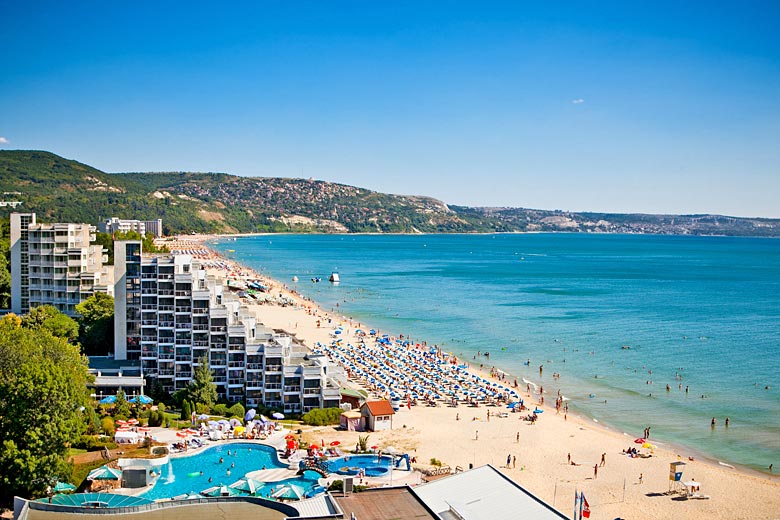
Watersport options pepper the coast, where there are also Blue Flag beaches aplenty. In fact, Bourgas is home to the highest concentration of certified clean bays, including stretches in the party town of Sunny Beach*, scenic Sveti Vlas* and sophisticated Duni*.
The weather in Bulgaria makes it an especially good option if you want a summer holiday with oodles of sunshine but manageable temperatures. Daytimes are long and bright between May and September (as you can see, the hours are far shorter by October), and evenings are warm without being hot or sticky. The sea is perfectly pleasant, peaking in August, and there's only a slim chance of encountering any rain during this time.
Whether you head to the bright lights of Sunny Beach or the more relaxed shores in Obzor*, Bulgaria is a brilliant option for an all inclusive holiday with a difference. It's sure to see your pound go that bit further while making the most of the award-winning Balkan beaches and sought after summer sun.
Bourgas weather
| Jan | Feb | Mar | Apr | May | Jun | Jul | Aug | Sep | Oct | Nov | Dec | |
|---|---|---|---|---|---|---|---|---|---|---|---|---|
| Maximum daytime temperature °C |  6 6 |
 7 7 |
 11 11 |
 16 16 |
 21 21 |
 26 26 |
 28 28 |
 28 28 |
 25 25 |
 19 19 |
 13 13 |
 8 8 |
| Hours of sunshine (daily) | ||||||||||||
| Days with some rainfall |  7 7 |
 7 7 |
 6 6 |
 8 8 |
 8 8 |
 7 7 |
 5 5 |
 4 4 |
 4 4 |
 4 4 |
 7 7 |
 8 8 |
| Sea temperature °C |  7 7 |
 6 6 |
 7 7 |
 9 9 |
 15 15 |
 21 21 |
 24 24 |
 25 25 |
 22 22 |
 18 18 |
 13 13 |
 9 9 |
Tempted to book that all inclusive holiday? Check out our collection of online discounts from First Choice to sort out your summer vacay today.
Please note: what's included in an all inclusive holiday can vary between resorts. Ensure you read the small print so you know what is and isn't included before you book to avoid any unexpected charges.
 Destination finder
Destination finder
More about the Mediterranean
Mediterranean by month
Jan Feb Mar Apr May Jun Jul Aug Sep Oct Nov Dec
Explore holiday destinations
- Beach holidays
- City breaks
- Family holidays
- Half term holidays
- Spring holidays
- Summer holidays
- Autumn holidays
- Winter sun holidays
- Honeymoons
- Coolcations
- Compare places
- Ski resorts
Save with latest deals & discounts
- Holiday offers
- Top travel brands
- Airlines & flights
- Discount hotels
- TUI
- Jet2holidays
- Neilson
- Marella Cruises
- Pierre & Vacances
- Caledonian Travel
- Club Med
- Boxing Day sales
Airport parking
- Manchester Airport
- Stansted Airport
- Bristol Airport
- Luton Airport
- Birmingham Airport
- Edinburgh Airport
- Gatwick Airport
- Glasgow Airport
- Newcastle Airport
Airport lounges
- Manchester Airport
- Birmingham Airport
- Bristol Airport
- Edinburgh Airport
- Glasgow Airport
- Heathrow Airport
- Newcastle Airport
- Stansted Airport
- Gatwick Airport
Be inspired
Get your weekly fix of holiday inspiration from some of the world's best travel writers plus save on your next trip with the latest exclusive offers
We promise not to share your details



















